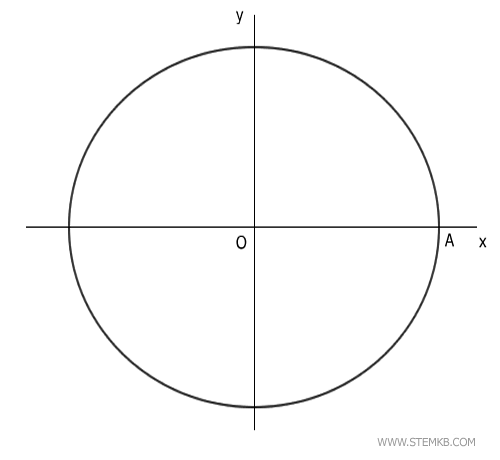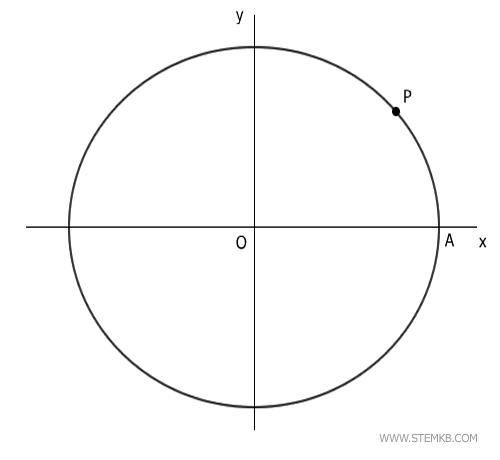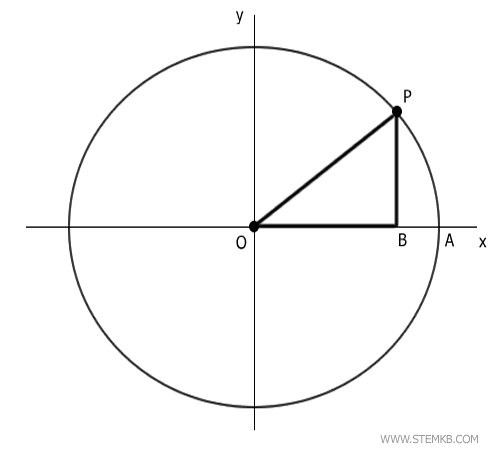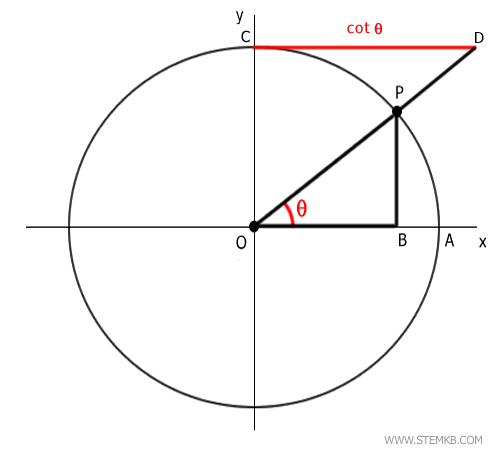
Cotangent Function
The cotangent is the ratio between the adjacent side and the opposite side of that angle, typically symbolized as cot() or cotg(). To put it mathematically, we get $$ \cot(θ) = \frac{ \text{adjacent side} }{ \text{opposite side} } $$
The interesting aspect about cotangent is its versatility. Its value can encompass the entirety of real numbers and it displays a rhythmic pattern, repeating its cycle every 180 degrees.
Picture a right triangle with an angle of 45 degrees. If the side adjoining this angle measures 10 cm, and the opposite side is also 10 cm, the cotangent of this angle simplifies to:
$$ \cot(45°) = \frac{ 10 }{ 10 } = 1 $$
The true beauty of cotangent lies in its variability. Depending on the angle's position within the triangle, the cotangent can be any real number.
Now, let's illustrate this with a practical example.
Imagine a circle with its center at point O and a unit radius OA.

Choose a random point P on the circle's circumference.

Next, form a right triangle by drawing the hypotenuse that links the center of the circle O to point P.

We'll then examine angle θ.

Here, cotangent is represented as the ratio of the side adjacent to the angle (OB) over the opposite side (BP).
$$ \cot(θ) = \frac{\overline{OB}}{ \overline{BP} } $$
Considering that OB is the cosine and BP is the sine of the angle, the cotangent morphs into a ratio of cosine to sine.
$$ \cot(θ) = \frac{\cos θ}{ \sin θ} $$
A quick aside: you might recall that the tangent is the ratio of sine to cosine. $$ \tan(θ) = \frac{\sin θ}{ \cos θ} $$ Hence, you can represent the cotangent as the reciprocal of the tangent $$ \cot(θ) = \frac{1}{ \tan θ} = \frac{1 }{\frac{\sin θ}{ \cos θ}} = \frac{\cos θ}{ \sin θ} $$
Geometrically, the cotangent equates to the length of segment OC.

Should the angle lie between 0 and 90 degrees, the cotangent is positive. However, for angles between 90 and 180 degrees, the cotangent becomes negative.
For an angle of 90°, the cotangent equals zero, while for angles of 0 or 180°, it remains undefined.
Just like its cousin, the tangent, the cotangent is a periodic function, echoing its cycle at consistent intervals.
Particularly, the cotangent's period is 180 degrees (or π radians), indicating that the cotangent value of any angle will match that of an angle increased or decreased by 180 degrees.
For example, the cotangent of a 30-degree angle is identical to a 210-degree angle (since 210 equals 30 plus 180).
Lastly, the cotangent of an angle θ is a dimensionless measure. Regardless of the size of the circumference, it stays constant, being derived from the ratio of two lengths.

